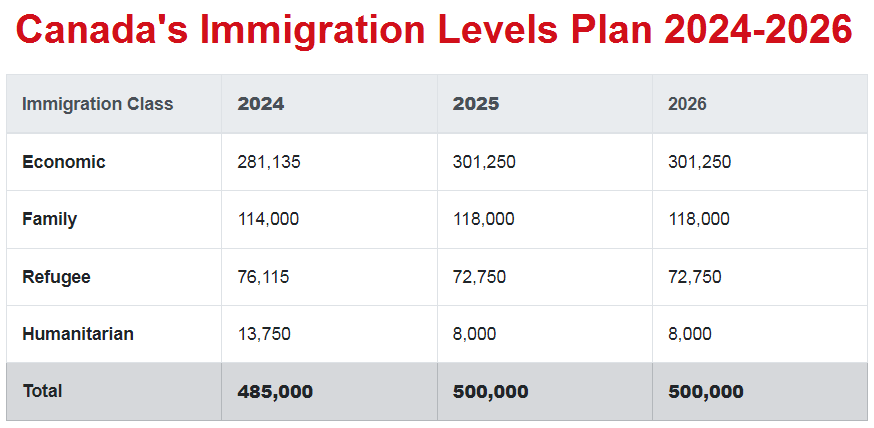Canada is known for its diverse economy and welcoming immigration policies, making it a popular destination for job seekers worldwide. Whether you’re interested in skilled or unskilled work, there are various pathways to explore. Let delve into the differences between skilled and unskilled jobs in Canada, the immigration routes available for each category and application sites for those interested in pursuing a career in this country.
Skilled Jobs in Canada
Skilled jobs in Canada typically require specialized knowledge, training, or education. These positions are often classified under the National Occupational Classification (NOC) system, which categorizes jobs based on skill level and skill type. Skilled jobs are classified as NOC levels 0, A, or B.
Examples of skilled jobs in Canada include:
- Information Technology (IT) professionals
- Engineers (All Engineering Field)
- Healthcare professionals (doctors, nurses, etc.)
- Tradespeople (electricians, plumbers, etc.)
- Teachers
- Accountants and finance professionals
Immigration Pathways for Skilled Workers
Canada offers several immigration pathways for skilled workers, including:
Express Entry System: The Express Entry system manages applications for three federal economic immigration programs: the Federal Skilled Worker Program, the Federal Skilled Trades Program, and the Canadian Experience Class. To be eligible, candidates must meet the minimum criteria and create an Express Entry profile.
Provincial Nominee Programs (PNPs): PNPs allow Canadian provinces and territories to nominate individuals who wish to immigrate to Canada and who are interested in settling in a particular province or territory. Each PNP has its own eligibility criteria and streams.
Quebec Skilled Worker Program: Quebec has its own immigration system, separate from the rest of Canada. The Quebec Skilled Worker Program is designed to attract skilled workers to the province based on their ability to contribute to the economy.
Unskilled Jobs in Canada
Unskilled jobs, also known as low-skilled or semi-skilled jobs, do not require specialized education or training. These jobs are often classified as NOC levels C or D.
Examples of unskilled jobs in Canada include:
- Retail salespersons
- Food service workers
- Cleaners and janitors
- Agricultural workers
- Truck drivers
- Caregivers
Immigration Pathways for Unskilled Workers
While Canada primarily focuses on attracting skilled workers, there are still some immigration pathways available for unskilled workers:
Seasonal Agricultural Worker Program (SAWP): The SAWP allows agricultural employers in Canada to hire temporary foreign workers for seasonal agricultural work when Canadians and permanent residents are not available.
Temporary Foreign Worker Program (TFWP): The TFWP allows Canadian employers to hire foreign workers to fill temporary labor and skill shortages when qualified Canadian citizens or permanent residents are not available.
Caregiver Program: The Caregiver Program allows Canadian families to hire foreign caregivers to provide care for children, elderly persons, or persons with medical needs when Canadians or permanent residents are not available.
How to Find and Apply Skilled and Unskilled Jobs in Canada
It is your duty to look for those job openings which are available for interested candidates/applicants. The best ways to search jobs online, is through the authentic job websites, job portals for Canada jobseekers. For those looking to apply for Skilled or Unskilled Jobs in Canada, consider using any of the following application sites:
| Skilled or Unskilled Jobs | Site 1 / SEARCH & APPLY |
| Skilled or Unskilled Jobs | Site 2 / SEARCH & APPLY |
| Skilled or Unskilled Jobs | Site 3 / SEARCH & APPLY |
| Skilled or Unskilled Jobs | Site 4 / SEARCH & APPLY |
In the search result box, type in the job (Skilled or Unskilled) position you wish to apply, e.g Farm Jobs, Fruit Picking Jobs, Factory Jobs, Production Worker, IT Jobs, Sales Jobs, Security Guard Jobs, Driver, Cashier, Cleaning Jobs, Health Care Jobs, Housekeeping Jobs, Caregiver Jobs, Driver Jobs, Construction Jobs, Mechanical Jobs, Electrician, Welder, Oil and Gas Jobs, Hotel & Hospitality Jobs, Restaurant Jobs, any position of your field. It will list jobs. You will learn more about all details and the application process for foreign workers, Canadian citizen, a permanent or a temporary resident of Canada.
If the position is fit for you and the basic requirements are fulfilled then you can now apply (along with your resume).
READ NOW: Checkout Canadian Resume Format and How to Write a Resume for Jobs in Canada Here.
In Conclusion
Whether you’re considering a skilled or unskilled job in Canada, there are various immigration pathways to explore. It’s essential to research and understand the requirements of each program to determine the best option for your situation. Canada’s welcoming attitude towengards immigrants and diverse job opportunities make it an attractive destination for individuals seeking new career opportunities and a better quality of life.
Disclaimer: This information is based on research work, this site does does not offer any form employment. Please verify all information from official sources before applying. Neither a government agency nor an immigration lawyer owns this site. The content on this site was gathered through research from various public domains for informative purposes. Please ignore any sites, organization or anyone asking or demanding any form of payment from you, for jobs or visa preparations. For your unique immigration needs, kindly consult an expert immigration lawyer.
 Jobsscholar Jobs Search | Education Hub | Scholars Portal
Jobsscholar Jobs Search | Education Hub | Scholars Portal
